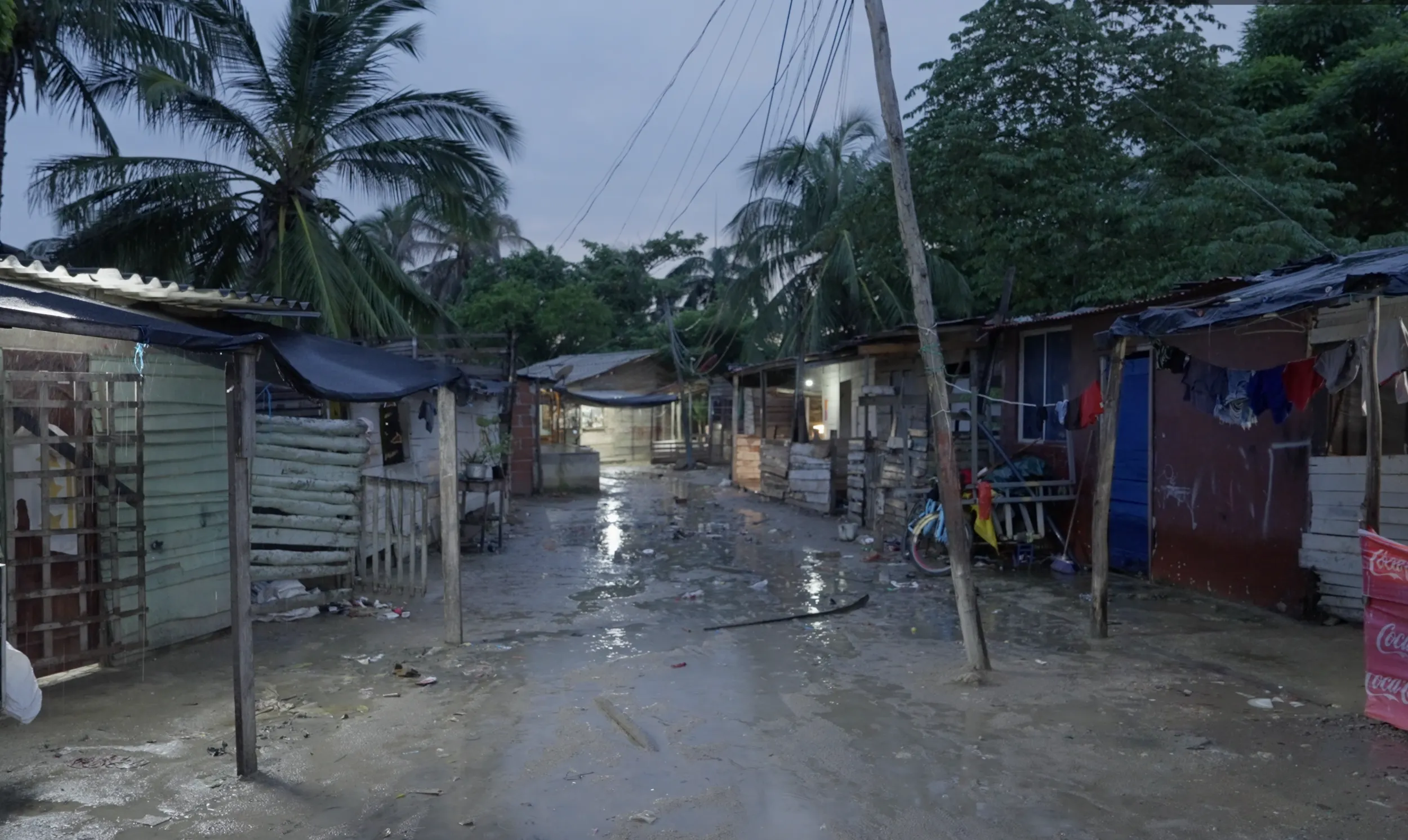

STORY
3
.
1
An Unsustainable Path
In Caribbean Islands, slight temperature and sea-level rises threaten entire communities.



STORY
3
.
1
An Unsustainable Path
In Caribbean Islands, slight temperature and sea-level rises threaten entire communities.



STORY
3
.
1
An Unsustainable Path
In Caribbean Islands, slight temperature and sea-level rises threaten entire communities.

In this century, several Small Island Developing States (SIDS) and low-lying countries will lose considerable territory to rising tides.
In this century, several Small Island Developing States (SIDS) and low-lying countries will lose considerable territory to rising tides.
In this century, several Small Island Developing States (SIDS) and low-lying countries will lose considerable territory to rising tides.
Rising sea-level is already disrupting traditional livelihoods, such as fishing, agriculture and tourism, leading to economic hardship and increased poverty. The erosion of coastal landscapes and the displacement of communities are jeopardizing invaluable cultural heritage and traditional knowledge, including intangible heritage.
Rising sea-level is already disrupting traditional livelihoods, such as fishing, agriculture and tourism, leading to economic hardship and increased poverty. The erosion of coastal landscapes and the displacement of communities are jeopardizing invaluable cultural heritage and traditional knowledge, including intangible heritage.
Rising sea-level is already disrupting traditional livelihoods, such as fishing, agriculture and tourism, leading to economic hardship and increased poverty. The erosion of coastal landscapes and the displacement of communities are jeopardizing invaluable cultural heritage and traditional knowledge, including intangible heritage.
Figure 1
Sea-level rise will drive coastal retreat in The Bahamas
Grand Bahama, The Bahamas
Thousand
In The Bahamas, sea-level rise is projected to displace 14 thousand people by 2050 (Rocky Road scenario). The western part of Grand Bahama, particularly around Freeport, will be a potential hotspot for people moving away due to rising seas.
People Leaving
Green circles represent people leaving due to sea-level rise under the Rocky Road scenario (SSP3-RCP7.0) by 2050 (1 - 2,794 people)




Figure 1
Sea-level rise will drive coastal retreat in The Bahamas
Grand Bahama, The Bahamas
Thousand
In The Bahamas, sea-level rise is projected to displace 14 thousand people by 2050 (Rocky Road scenario). The western part of Grand Bahama, particularly around Freeport, will be a potential hotspot for people moving away due to rising seas.
People Leaving
Green circles represent people leaving due to sea-level rise under the Rocky Road scenario (SSP3-RCP7.0) by 2050 (1 - 2,794 people)




Figure 1
Sea-level rise will drive coastal retreat in The Bahamas
Grand Bahama, The Bahamas
Thousand
In The Bahamas, sea-level rise is projected to displace 14 thousand people by 2050 (Rocky Road scenario). The western part of Grand Bahama, particularly around Freeport, will be a potential hotspot for people moving away due to rising seas.
People Leaving
Green circles represent people leaving due to sea-level rise under the Rocky Road scenario (SSP3-RCP7.0) by 2050 (1 - 2,794 people)




Limiting global warming to 1.5°C above pre-industrial levels is imperative to thwarting the existential threats posed by the climate crisis, yet we are on the cusp of crossing this tipping point:
Limiting global warming to 1.5°C above pre-industrial levels is imperative to thwarting the existential threats posed by the climate crisis, yet we are on the cusp of crossing this tipping point:
Limiting global warming to 1.5°C above pre-industrial levels is imperative to thwarting the existential threats posed by the climate crisis, yet we are on the cusp of crossing this tipping point:
"There is no adaptation to a 2°C increase in temperature. You don't adapt to winds of 250 to 300 km per hour. We can't adapt to that if that's our new reality. And if the countries of the North continue to do business as usual, if the climate's carbon balance decreases and more CO2 is emitted into the air, and as long as we lock ourselves into further warming, there will be no adaptation to an increase of more than 2ºC. I think we're heading for an increase of 4ºC. If all the islands became net zero, we would still be bankrupt. So, these actions seem to me to be very limited and desperate.”
Focus group participant, The Bahamas
"There is no adaptation to a 2°C increase in temperature. You don't adapt to winds of 250 to 300 km per hour. We can't adapt to that if that's our new reality. And if the countries of the North continue to do business as usual, if the climate's carbon balance decreases and more CO2 is emitted into the air, and as long as we lock ourselves into further warming, there will be no adaptation to an increase of more than 2ºC. I think we're heading for an increase of 4ºC. If all the islands became net zero, we would still be bankrupt. So, these actions seem to me to be very limited and desperate.”
Focus group participant, The Bahamas
"There is no adaptation to a 2°C increase in temperature. You don't adapt to winds of 250 to 300 km per hour. We can't adapt to that if that's our new reality. And if the countries of the North continue to do business as usual, if the climate's carbon balance decreases and more CO2 is emitted into the air, and as long as we lock ourselves into further warming, there will be no adaptation to an increase of more than 2ºC. I think we're heading for an increase of 4ºC. If all the islands became net zero, we would still be bankrupt. So, these actions seem to me to be very limited and desperate.”
Focus group participant, The Bahamas
Figure 2
Rapidly accumulating loss and damage from subsequent disasters have driven many SIDS into even deeper debt.
Debt as a % of GDP in Dominica and The Bahamas. Red bars indicate years during which there was a major disaster.
No major disasters
Occurrence of major disasters
Source: Adapted from Figure 9 in Bharadwaj, M. et al. (2023) Sinking Islands, Rising Debts, based on data from the International Monetary Fund (IMF, n.d.a) and EM-DAT (Centre for Research on the Epidemiology of Disasters, n.d.).

Figure 2
Rapidly accumulating loss and damage from subsequent disasters have driven many SIDS into even deeper debt.
Debt as a % of GDP in Dominica and The Bahamas. Red bars indicate years during which there was a major disaster.
No major disasters
Occurrence of major disasters

Source: Adapted from Figure 9 in Bharadwaj, M. et al. (2023) Sinking Islands, Rising Debts, based on data from the International Monetary Fund (IMF, n.d.a) and EM-DAT (Centre for Research on the Epidemiology of Disasters, n.d.).
Figure 2
Rapidly accumulating loss and damage from subsequent disasters have driven many SIDS into even deeper debt.
Debt as a % of GDP in Dominica and The Bahamas. Red bars indicate years during which there was a major disaster.
No major disasters
Occurrence of major disasters

Source: Adapted from Figure 9 in Bharadwaj, M. et al. (2023) Sinking Islands, Rising Debts, based on data from the International Monetary Fund (IMF, n.d.a) and EM-DAT (Centre for Research on the Epidemiology of Disasters, n.d.).
Many SIDS lack the needed financial resources and technical capacity to anticipate the impacts of climate change and implement needed adaptation measures. Decades of externally funded economic development and disaster recovery have saddled countries in the Greater Caribbean with persistently high public debt. In 2023, the average debt for Caribbean nations was 74% of GDP. [1]
Debt relief efforts and restructuring initiatives have had some success, including in Jamaica and Guyana, but unsustainable debt burdens remain a key barrier to long-term development and climate adaptation.
Many SIDS lack the needed financial resources and technical capacity to anticipate the impacts of climate change and implement needed adaptation measures. Decades of externally funded economic development and disaster recovery have saddled countries in the Greater Caribbean with persistently high public debt. In 2023, the average debt for Caribbean nations was 74% of GDP. [1]
Debt relief efforts and restructuring initiatives have had some success, including in Jamaica and Guyana, but unsustainable debt burdens remain a key barrier to long-term development and climate adaptation.
Many SIDS lack the needed financial resources and technical capacity to anticipate the impacts of climate change and implement needed adaptation measures. Decades of externally funded economic development and disaster recovery have saddled countries in the Greater Caribbean with persistently high public debt. In 2023, the average debt for Caribbean nations was 74% of GDP. [1]
Debt relief efforts and restructuring initiatives have had some success, including in Jamaica and Guyana, but unsustainable debt burdens remain a key barrier to long-term development and climate adaptation.
References
Rosenblatt, D., et al. (2024). Caribbean Economics Quarterly: Volume 13, Issue 1: Risks and Opportunities for Caribbean Economies in a Diverging World. IDB Publications. https://doi.org/10.18235/0012988
References
Rosenblatt, D., et al. (2024). Caribbean Economics Quarterly: Volume 13, Issue 1: Risks and Opportunities for Caribbean Economies in a Diverging World. IDB Publications. https://doi.org/10.18235/0012988
References
Rosenblatt, D., et al. (2024). Caribbean Economics Quarterly: Volume 13, Issue 1: Risks and Opportunities for Caribbean Economies in a Diverging World. IDB Publications. https://doi.org/10.18235/0012988





